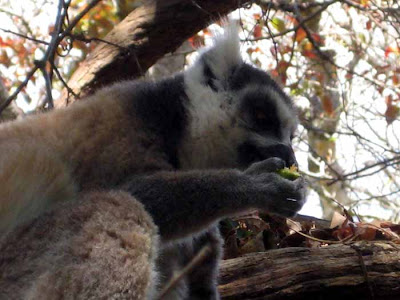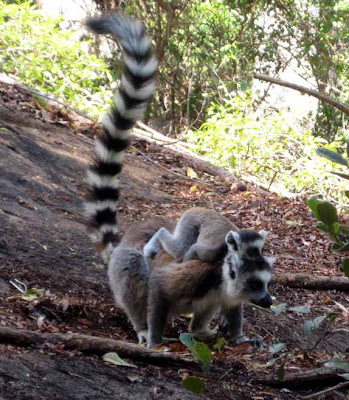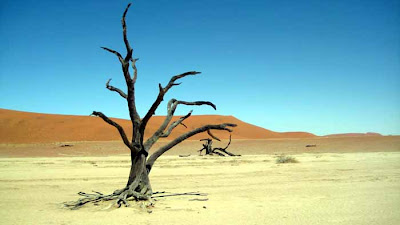I now know why it’s impossible to rent a car in Madagascar.
For about a month before I arrived in Tana, I had been in touch with all of the rental agencies trying to locate a small, cheap car for the week I would be there. But in Madagascar, you can’t rent just a car – instead, you hire the car and a driver together. So, this is how I ended up spending four days of my time in Madagascar riding shotgun with Rebe, a driver I hired through a recommendation at one of the hotels in the capital.
Our negotiation was quick: I told him where I wanted to go and for how long, he quoted a price, I knocked off 25% - to make the offer a bit lower than the price charged by the major rental agencies, except Rebe’s price included the petrol – and he agreed immediately. There is nothing worse than having a counter-offer immediately agreed to, and I knew that I paid more than I needed to. But Rebe turned out to be well worth the money.
Driving in Madagascar is a sport. It’s a test of dexterity, agility, and endurance, and it requires the right combination of patience and aggressiveness, knowledge of the local roads, and a sense of humor. It’s probably best for tourists, Malagasy, and the cars themselves that foreigners don’t drive. For four straight days, Rebe piloted his red Ford station wagon through the Madagascar towns and countryside, handling the hazards and distractions in, on the side of, and beyond or past the roadside.
What’s in the road depends on where you are. Getting out of Tana – which could take between 30 and 90 minutes, depending on the time of day – the road is thick with traffic and people, mainly vendors selling whatever you could possibly imagine and taxi brousse, the Malagasy equivalent of an African combi.
Taxi brousse are shared-ride mini-buses that travel along a set route. To take a ride, you find the right taxi brousse in the bus station lot, throw your bag on the roof, and take a seat inside. And then you wait. Most taxi brousse are the size of 15-passenger vans in the States, but in Africa it’s common to have 20 people inside, and not uncommon to have 22-25 passengers. When – and if – the taxi brousse fills up , the trip begins. (Besides the comfort factor, travelling to the countryside by taxi brousse wasn’t an attractive option for me, as I didn’t have the time needed, and not speaking any French would have made it very difficult.)
Back on the road in Tana, Rebe stays close to the cars in front of him, putting his front bumper right next to the bumper of the car in front of him, careful not to let a car sneak in, or to allow a never-ending stream of pedestrians to carve a path in front of him. Whenever we are still for more than a few seconds, a street vendor approaches my window and holds out mango, toy, a whisk, or a live chicken. (15,000 ariary – about USD$8, I’m told is the price of the flashlight. I don’t need it, I tell the vendor. Fine: 11,000 ariary, he comes back with. And so on.)
As we leave Tana the crowds thin, the scenery changes, and the obstacles in the road change. Rebe puts on his old MP3 player, which has about 50 songs on it – a combination of 90’s American dance music (think Vanilla Ice, and other hits from the early 90’s bar mitzvah circuit) and French/Malagasy electronic – which he knows quite well. There’s one song, part in English and part in French, which I gather is called “Chihuahua,” that Rebe seems to like. It’s on the playlist multiple times, and Rebe starts to whistle to the melody when it comes on.
We’re on a “good road” – it is sealed and wide enough for a lane in each direction, but it still has its share of large potholes and the occasional unmarked speed bump (a Swazi specialty, no doubt, that has made its way to Madagascar), of which Rebe seems to know each one. Here, instead of the armies of people and vendors, Rebe now navigates the curves of the road bending around the hills and mountains, and whatever else ends up blocking our path. We are likely to come across a pack of cattle being shepherded by young boys to a pasture, an overloaded taxi brousse or large truck chugging slowly up the side of a hill, or a pousse pousse, or rickshaw, especially if we are in or close to Antsirabe, where there seems to be a rickshaw for each of the 150,000 living there.
When there’s something in our way, Rebe taps on his horn. This first toot is polite – friendly even – and most often the offending party obligingly moves. Trucks drift to the side of road, and flip on their left indicator lights, signaling to Rebe to pass; rickshaws slow down and move over; and even the cows knowingly shuffle aside (and if they don’t voluntarily move, the young boys give them a sharp smack on the side with a stick, tree branch, or rope.) But if there’s no movement, Rebe becomes inpatient. He hits the horn again, but in a longer, angrier blast.
In the countryside the roads are clearer, and my attention turns to the show on the side. There are constantly women lining the sides of the roads, with huts or simple displays selling honey (in recycled empty plastic water bottles), fruits, crayfish, homemade rum, crafts, or live animals. As we approach, each woman holds up what they are selling and gestures to our car. I quickly learn that live animals are handled in different ways to keep them docile while they’re being held. Chickens are dangled upside down, held by their feet; rabbits are presented by their ears, held back behind their heads; and ducks are fastened by their wings.
We often pass furnaces, where sand from the rivers is pressed and baked into bricks. These are simple ovens, formed by creating several long openings at the bottom where wood is inserted. These bricks will be loaded into wooden carts, and pushed or pulled by a team of young children along the side of the road to their destination. (Almost all of the buildings on the sides of the road are the same modest construction of brick and thatched roofs. They are rectangular, with a triangular roof, and windows only opening to the west, to avoid the fierce wind coming from the east.)
There is more activity on the side of the road, but my attention often drifts beyond it, to the beautiful hills and mountains we are traversing. The Malagasy countryside is beautiful, and this trip will take me through farming areas (rice paddies, mainly – all cultivated manually – no tractors here – with cattle pulling sleds to churn the land and women knee-deep in water pulling the rice out), rolling hillsides, and finally rainforest.
When we arrive at our destination – a park or nature reserve, or a hotel for the evening – Rebe will often sort everything out for me. He will locate a park guide who allegedly speaks English or arrange the room. We’ll figure out a time to meet up later in the day or the next morning (the hotels here often will give the driver a free shared room and sometimes a complementary dinner as well). He will disappear, and I will explore.



























 I still have a number of loose ends to wrap up before leaving on Wednesday, and am sure that I will have some thinking to do after that. From my experience with my last couple of jobs – with Bike & Build and at Accent – it takes some time after I’ve been away from my work to realize and appreciate what I’ve learned and accomplished. I hope to add some of my thoughts here in a few weeks.
I still have a number of loose ends to wrap up before leaving on Wednesday, and am sure that I will have some thinking to do after that. From my experience with my last couple of jobs – with Bike & Build and at Accent – it takes some time after I’ve been away from my work to realize and appreciate what I’ve learned and accomplished. I hope to add some of my thoughts here in a few weeks.